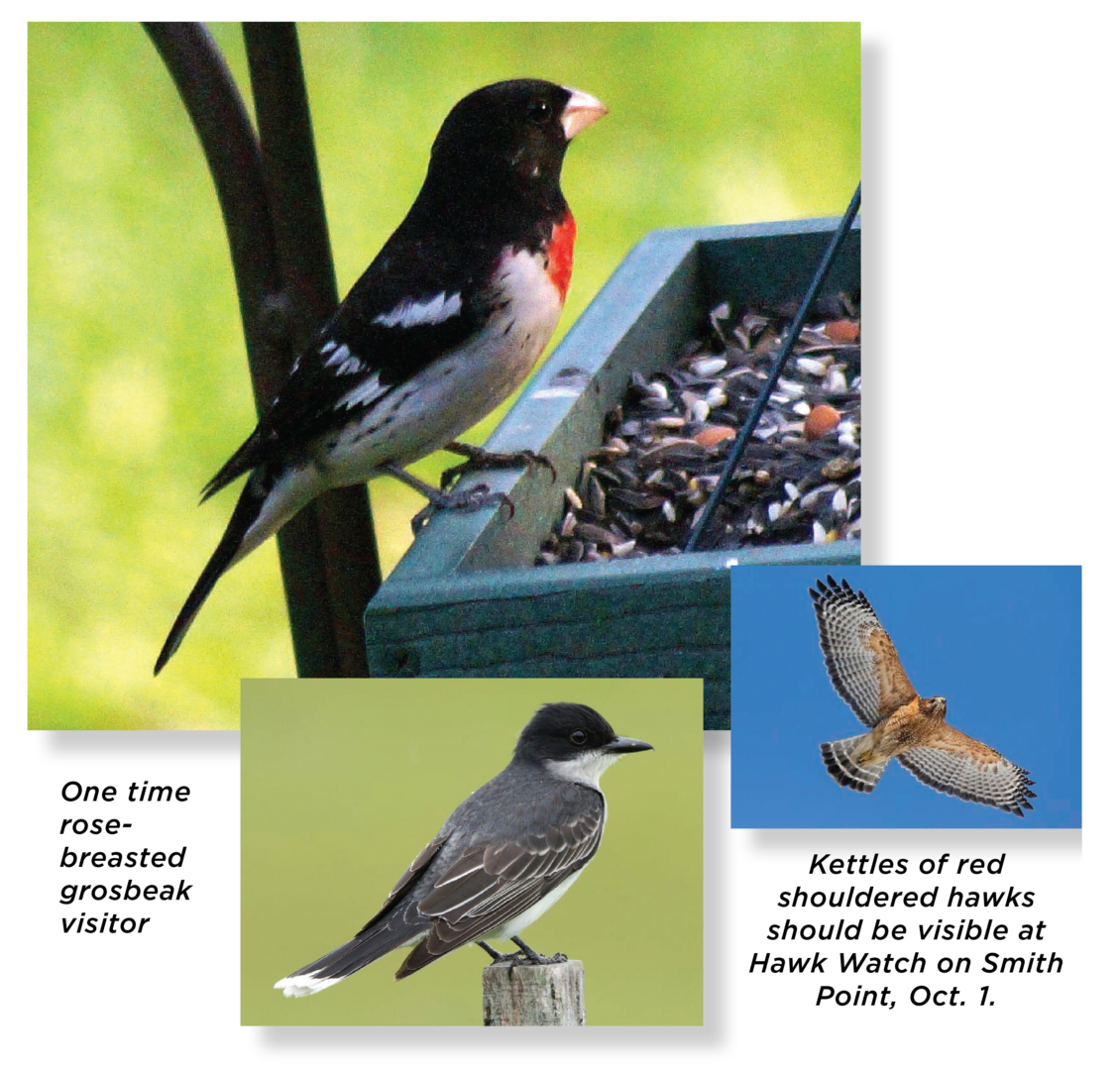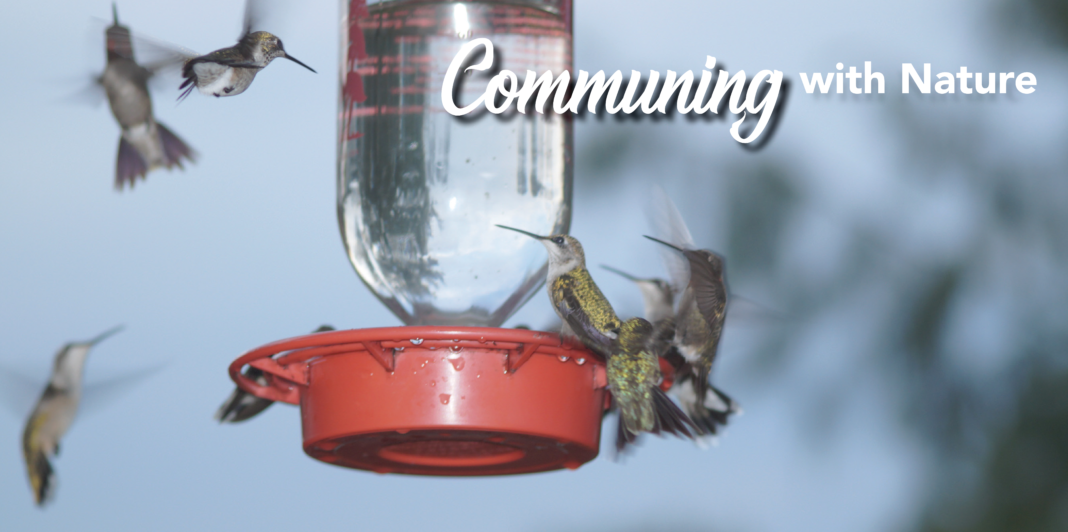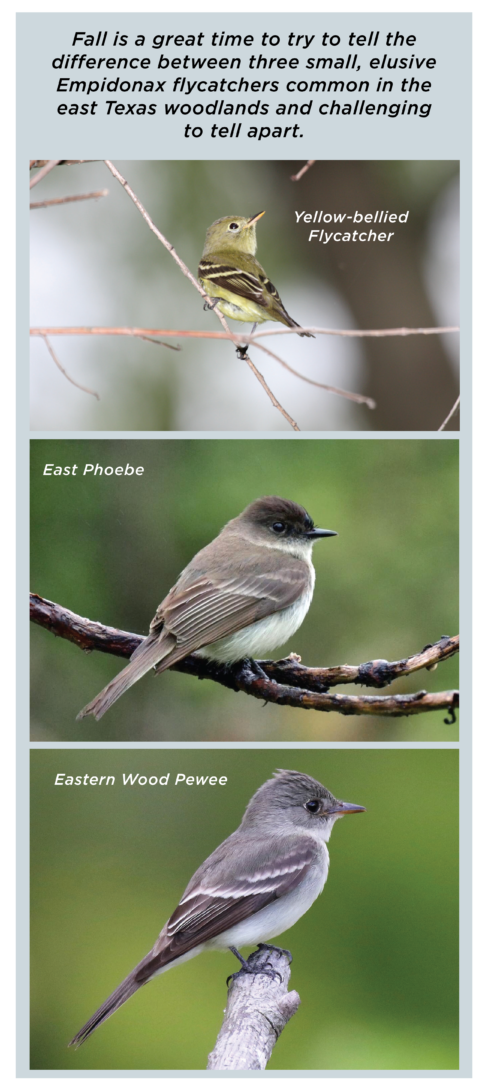Look Up! It’s a Bird on the Wing, Migrating
If you spend time in the morning and/or evening, maybe with a beverage, watching the birds visiting your backyard, then you know the excitement when you see something new. Fall migration is underway as millions of warblers, herons, raptors, and hummingbirds are making their way along the North American Central Flyway.
The upper Texas coast sees many of the birds, beginning as early as July and lasting through November, as they hug the coastline on their way to South and Central America for the winter. Thankfully, many birds that migrate south in the winter stay in our region because of the abundance of berries on bushes and trees, diverse seed-bearing plants, and bountiful insects. And reasonably mild winter temperatures.

Watch Migration in Real-Time
Real-time technology and the work of Cornell scientists have given us a way to track the migration almost through our backyards by using the BirdCast Migration Dashboard at (birdcast.info/migration-tools/migration-dashboard/). Just enter your county and see the volume, direction and species of migratory birds traveling overhead the previous night. In mid-August we could track bright red summer tanagers, Eastern kingbirds, yellow-throated vireos, warblers, cattle egrets, green herons, scissor tailed flycatchers, and indigo buntings.
Fall is a great time to try to tell the difference between three small, elusive Empidonax flycatchers common in the east Texas woodlands and challenging to tell apart. Look up in the trees, way up and midway to spot an Eastern wood pewee, Eastern phoebe, and Eastern kingbird. Try using the free eBird app, another Cornell/Audubon tool to help you identify physical characteristics and their sounds. eBird even shows you comparisons with similar birds.
Raptors – Hawk Watch
The fall raptor migration is just beginning for 2022 and has been monitored from August through November for the past 26 years by Gulf Coast Bird Observatory (GCBO). You can participate at Candy Abshier Wildlife Management Area, 10 Parks & Wildlife Dr. in Port Arthur, where you can climb up their 30-foot observation tower to get a, here comes the pun, bird’s eye look at migrating hawks. Staffers are available daily between 8 am and 4 pm to answer questions.
You might want to mark your calendar for October 1 when the Smith Point Hawk Watch Celebration will be on from 10:00am – 1:00pm. There are always plenty of raptors soaring through the sky! Visitors will be able to look through scopes and binoculars and see the migration up close. For more info visit www.gcbo.org.
Hummers are Here
Last but certainly not least, here come the hummingbirds. While there are over 330 species and 115 genera, only in the Americas, we typically see only ruby throat hummers in east Texas and the upper Gulf Coast. Occasionally a rufous hummer will flit through.
We begin to see hummingbirds buzzing around our nectar-rich early spring blooms in March or April, but they don’t stay long. Most of them head further north to spend the heat of the summer. It’s not uncommon, though to have some hummingbirds hang out in our yards through the summer, so keep a feeder fresh.
Hummingbird males began arriving back in early August to prepare for their big migration to Central America, generally in early October. The females follow in 2 or 3 weeks. For the next two months, until the first big cold front arrives, they feed in a frenzy that gets crazier as they sense their exit time approaching. The males guard their favorite feeder, often perching in the same spot nearby. Once the urge to sugar load takes over, they stack up for the next open feeding spot like airplanes circling an airport. When that first windy chill hits, they’re gone, immediately.
A few older birds not up to the trip, or juveniles not quite ready to go are always left. Keep a feeder up! It won’t keep them from leaving if they can.
As you get better at spotting and identifying the birds that stay year-round and our seasonal visitors, you’ll find yourself looking forward to certain migrations. I caught photos of some one-time visitors, a rose-breasted grosbeak and an oriole, but I still look for them at migratory time. Right now, though, I’m changing hummer feeders every other day for just a half dozen, but ready for more.
Learn more about identifying birds by joining a chapter of the Texas Master Naturalist or Texas Master Gardeners. Piney Wood Lakes Chapter of Texas Master Naturalist serves members across Polk, San Jacinto, Trinity, and Tyler Counties with volunteer opportunities, educational resources and conservation projects txmn.org/pineywoodlakes. SJC Master Gardeners serves members in San Jacinto and Polk Counties. Life-long learners and trained volunteers, master gardeners give time, knowledge, and expertise to improve the quality of life for neighbors and visitors. txmg.org/sjmg.

















